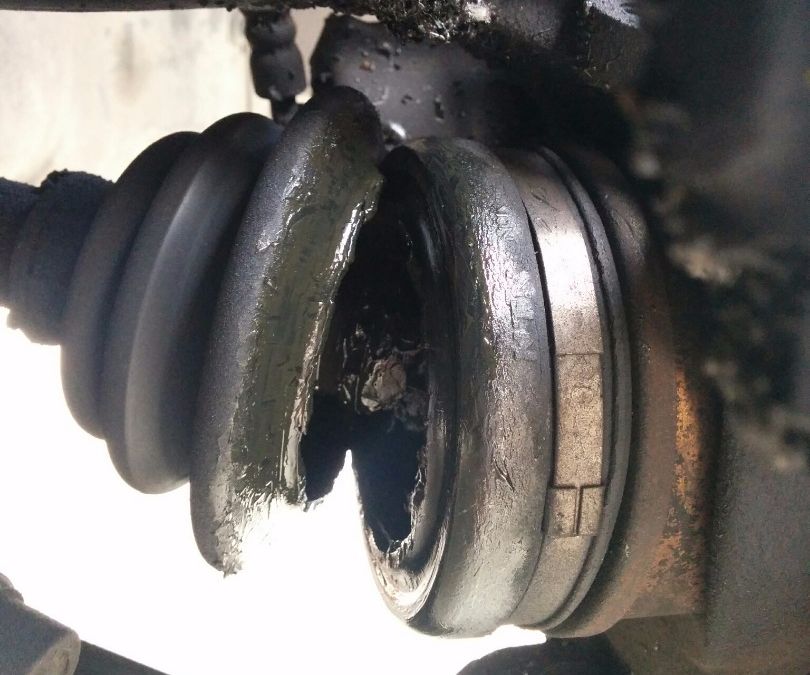Discovered both my outer CV boots were split. CV joints are fine with no noises, so on research I discovered these on Rock Auto. They are Dorman part # 03608 and RA sells for about $26 each, but Advance Auto sells for about $19 each with no shipping and in stock.
I liked the single split design with tiny nuts and bolts holding the seam together. Kit came with metal compression bands. I did not want to remove my CV axle to install new boots, so this surely would be the answer - NOT!
First problem was trying to verify small and large end ID before I purchased. RA info from Dorman is different depending on where you look. On the product page it states at the top:
Speedi-Boot; Large End ID: 3.62" (92mm); Large End Circ.; 11.37" (289mm); Small End ID: 1.18" (30mm); Small End Circ: 3.71" (94mm); Length: 4.09"
But at the bottom it reads:
My vernier measurement of actual was smaller. Both Auto Zone and RA give contradictory measurements from Dorman.
But surely there's an allowance for compressing the boots with the compression rings - I thought, and it matched my year and model. So I ordered from Advance and got next day pick up.
I won't go into too much detail (and swear words) on my 3 hour for one boot installation, but this product is a classic example of engineering stupidity on paper with no actual engineer testing their design on installation.
The large and small boot end diameter difference ended up being a big deal because it was impossible to tighten the metal bands properly as designed. Snap ties would have been better. The metal bands need to be trimmed but no side cutter in the world will do it. I had to bend back and forth to break off excess. The small band tabs that were supposed to hold the overlap were too small to grab the extra band thickness, so I ended up using small snap ties to hold the overlap.
This was so frustrating I elected not to do the other side and will return the unused kit. I will wait until the CV joint starts making noise and get a complete rebuild - with CV boots installed.
![]()
I liked the single split design with tiny nuts and bolts holding the seam together. Kit came with metal compression bands. I did not want to remove my CV axle to install new boots, so this surely would be the answer - NOT!
First problem was trying to verify small and large end ID before I purchased. RA info from Dorman is different depending on where you look. On the product page it states at the top:
Speedi-Boot; Large End ID: 3.62" (92mm); Large End Circ.; 11.37" (289mm); Small End ID: 1.18" (30mm); Small End Circ: 3.71" (94mm); Length: 4.09"
But at the bottom it reads:
| Shaft End Inside Diameter | 1.21 in |
| Joint End Inside Diameter | 3.58 IN |
My vernier measurement of actual was smaller. Both Auto Zone and RA give contradictory measurements from Dorman.
But surely there's an allowance for compressing the boots with the compression rings - I thought, and it matched my year and model. So I ordered from Advance and got next day pick up.
I won't go into too much detail (and swear words) on my 3 hour for one boot installation, but this product is a classic example of engineering stupidity on paper with no actual engineer testing their design on installation.
The large and small boot end diameter difference ended up being a big deal because it was impossible to tighten the metal bands properly as designed. Snap ties would have been better. The metal bands need to be trimmed but no side cutter in the world will do it. I had to bend back and forth to break off excess. The small band tabs that were supposed to hold the overlap were too small to grab the extra band thickness, so I ended up using small snap ties to hold the overlap.
This was so frustrating I elected not to do the other side and will return the unused kit. I will wait until the CV joint starts making noise and get a complete rebuild - with CV boots installed.








